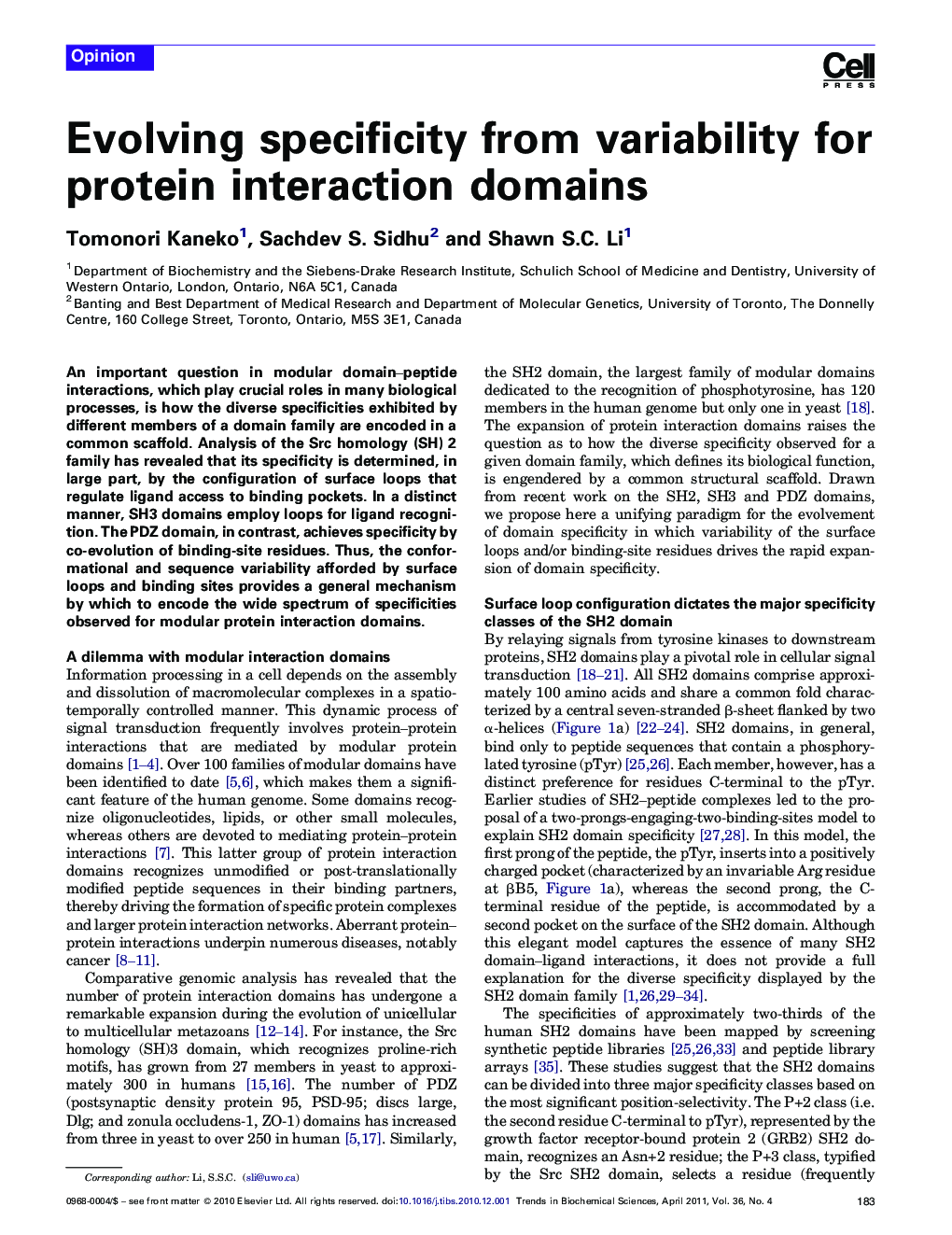| کد مقاله | کد نشریه | سال انتشار | مقاله انگلیسی | نسخه تمام متن |
|---|---|---|---|---|
| 2030901 | 1071266 | 2011 | 8 صفحه PDF | دانلود رایگان |

An important question in modular domain–peptide interactions, which play crucial roles in many biological processes, is how the diverse specificities exhibited by different members of a domain family are encoded in a common scaffold. Analysis of the Src homology (SH) 2 family has revealed that its specificity is determined, in large part, by the configuration of surface loops that regulate ligand access to binding pockets. In a distinct manner, SH3 domains employ loops for ligand recognition. The PDZ domain, in contrast, achieves specificity by co-evolution of binding-site residues. Thus, the conformational and sequence variability afforded by surface loops and binding sites provides a general mechanism by which to encode the wide spectrum of specificities observed for modular protein interaction domains.
Journal: - Volume 36, Issue 4, April 2011, Pages 183–190